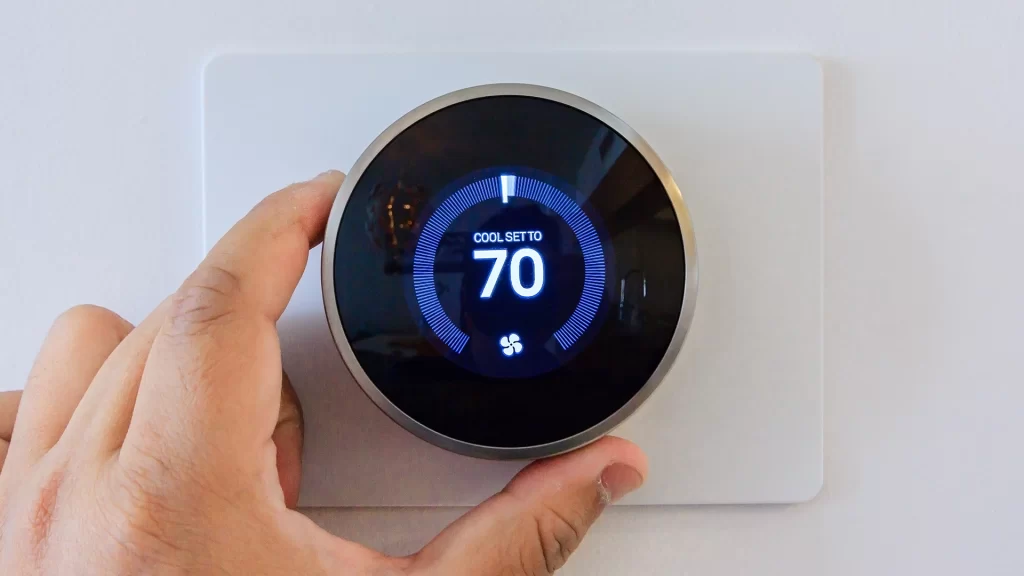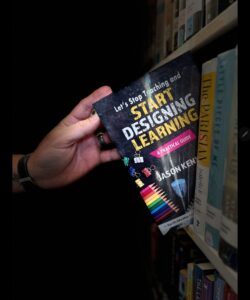Summer, with its heat and humidity ever rising, has me perspiring but also pondering our work in schools. Teachers, when it comes to what’s happening in your individual classrooms, be a thermostat. Leaders, when it comes to what’s happening in your schools, be a thermostat. Being a thermometer does no one any good. Let me explain.
A Thermostat Manifests the Expectations
The primary reason we all need to be a thermostat instead of a thermometer is this: A thermostat sets the temperature that the room will rise to meet. A thermometer reacts to what it reads from the and rises or falls in reaction. Teachers, when it comes to the learning in the room, you set the expectations. If we set the expectations low, our learners will meet them. If we set the expectations high, our learners will meet them. The point is this: we set the bar. The bar is the same for everyone in the room to rise to and meet. Our job then is to provide the guidance, information, skills and tools for our learners to get there.
Leaders, the job of being a thermostat is no different for you in your school building. You set the expectation for everyone to meet. The school is the room you set the expectation for. These are not different from grade level to grade level, or room to room. The bar is set, and your job is also to provide all the support possible for your staff to meet the expectation.
Being a thermometer doesn’t change the room. A thermometer reads the room and makes a judgment call. It says, “In this room, it is ____.” Teachers, when you act like a thermometer, you look at the learners in your classroom and change your expectations depending on your thoughts about their abilities and motivations. Leaders, it is the same with you in your school with your staff. Being a thermometer only changes you, not those you are trying to lead in learning or in providing learning to others.
A Thermostat Monitors the Environment
Admittedly, a thermostat is similar to a thermometer in one way. Both monitor the temperature and give out a reading. However, we have to remember that a thermostat has a set expectation in relation to what it is reading as the temperature of the room. In other words, it has a goal and is constantly checking in on the progress towards the goal.
Teachers, after you’ve set the expectations for learning in the room, we have to monitor where we are in relation to the goal. If we do not take constant and consistent readings, we can’t make the decisions necessary to get our kids to the expectations we’ve set. Leaders, what’s the climate like in your school building? Culture is what we do; climate is how it feels. Are you taking the time to check the temperature against the set expectations?
We can set it and forget it when it comes to the expectations of our classrooms or schools. Then what would be the point of setting the goals in the first place? Setting the expectation and then monitoring the progression is what all good thermostats do.
A Thermostat Makes the Adjustments
Here’s the other thing a thermometer can’t do; make changes to the temperature. A thermostat has a set expectation and monitors the temperature of the room. But the critical thing it does do is it signals for the unit to make the necessary adjustments to reach the desired temperature. It sets a goal, monitors it, and makes things happen to support the room in reaching the goal.
Teachers, we can set high expectations and monitor progress. But we know that’s not all. We know that our job is to provide the support for all of our learners in the room to rise to the level of the expectation. These supports will vary around the room as we know our learners come to us with different needs. It doesn’t mean they won’t rise to meet the goal. Education has never been about what the students can’t do; it’s about what they can do with the tools we give them.
Leaders, you also know the importance of being a thermostat in this area. If you set a goal for your school and constantly check in, but offer no support for the staff, you’re missing the point of the job in the first place. Leaders in school exist for two purposes: promoting learning and supporting staff. You have to set the goal, monitor your building and provide any and all support necessary for your staff to rise to the expectation.
We can be a thermometer in our rooms and buildings, reacting to what we judge around us without any real change happening. Or we can be a thermostat, setting the expectation, monitoring the progress and supporting all in reaching the goal of the room together. Be a thermostat, not a thermometer.


